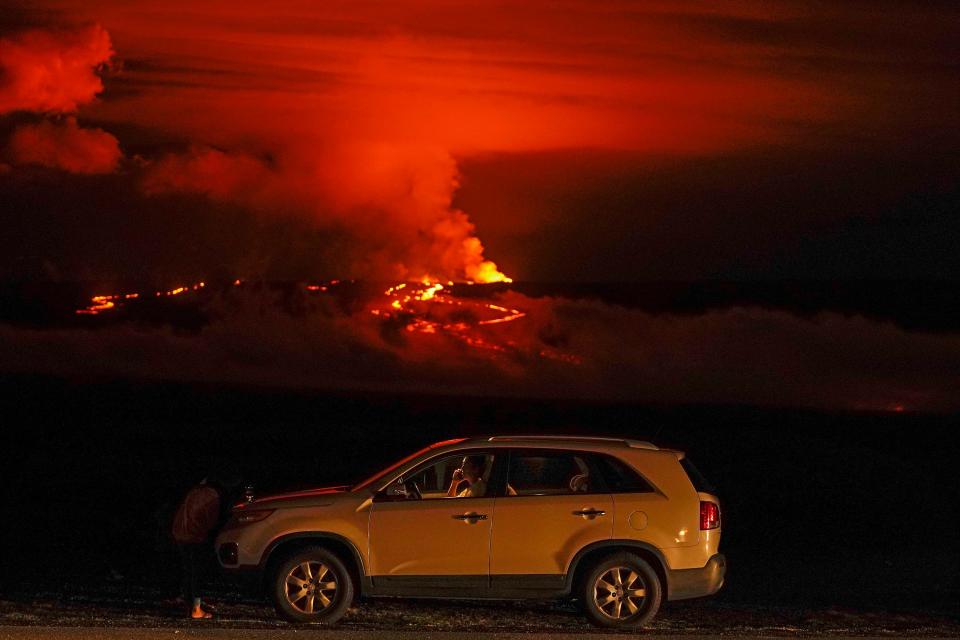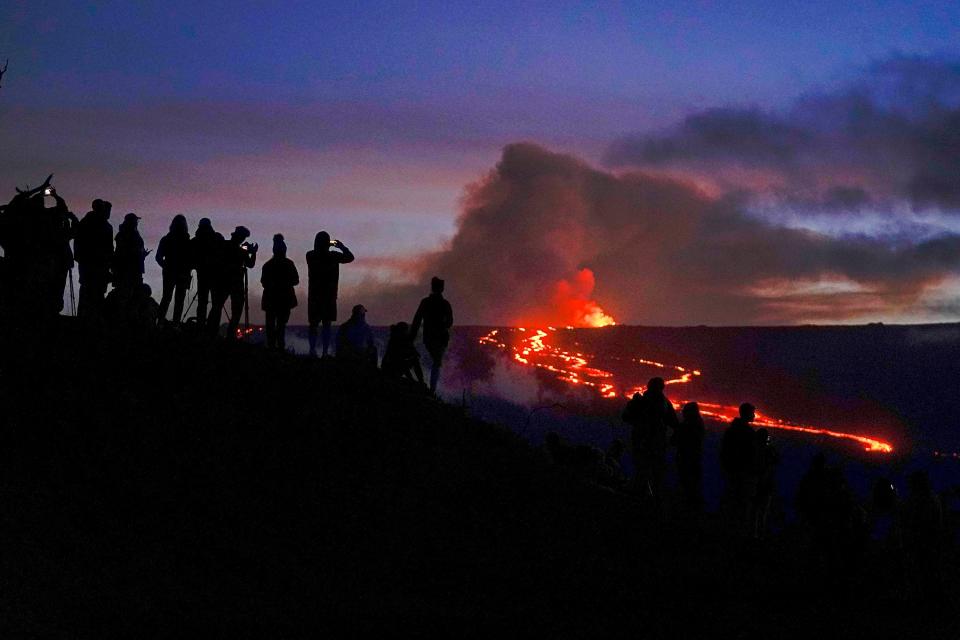Scientists unsure if Mauna Loa lava will intersect crucial Hawaii road: 'It's very difficult to estimate'
Scientists are unsure if slow-moving lava in Hawaii will cross the Big Island road, a vital route that connects the east and west sides of the island, after the world's largest volcano erupted last month.
Mauna Loa erupted on Nov. 27 after being dormant for 38 years, shooting lava as high as 200 feet in the air. Hawaii officials have warned people to take precautionary measures and to prepare for the worst.
But over the past several days, lava flow from Mauna Loa has slowed down "significantly" as it moved over flatter ground, according to the U.S. Geological Survey.
Scientists have been unable to estimate when or if the lava will reach Saddle Road, also known as Route 200 or Daniel K. Inouye Highway.
The lava was 1.8 miles from Saddle Road early Wednesday, according to USGS Volcanoes. In an update Wednesday afternoon, the USGS said the lava had "advanced very little" and was still about 1.8 miles away from the highway.
A LOOK AT MAUNA LOA'S ERUPTION: How the world's largest volcano is springing to life (again) in Hawaii
'HEARTBREAKING TO WATCH RESIDENTS DEAL WITH IT': As Mauna Loa erupts, lava flows toward a key Hawaii road. Can authorities stop it?
“I wish we could give a better answer,” David Phillips, deputy scientist-in-charge at USGS’s Hawaiian Volcano Observatory, told The Associated Press Wednesday. “And so just based on its current behavior and all the variables involved, it’s very difficult to estimate a time, a place, or even an if, it would intersect the highway.”
While eruption continues from the Northeast Rift Zone, only one active fissure is feeding the lava flow as it slowly advances northward towards Saddle Road, the USGS said in its daily Wednesday update.

According to Phillips, the flow appeared to be less active Wednesday than the previous day, which is likely due to the breakout of lava headed upslope that could be diverting lava from what’s headed to the highway.
In the past 24 hours, the main flow has traveled at an average rate slower than 20 feet per hour, according to the USGS. But rates may be "highly variable over the coming days and weeks," the USGS added.
"We do not expect any eruptive activity outside the Northeast Rift Zone," the USGS said in its daily Wednesday update.
CAN I STILL VISIT HAWAII?: What travelers to Hawaii can expect following Mauna Loa's eruption
Hawaii officials plan for road closures and residents have been told to prepare in the event that the highway becomes impassable. Drivers may have to find alternative routes which could add hours to commute times.
All areas surrounding the highway and near the lava flow are closed, according to an alert from Hawaii County. The public is prohibited from accessing these areas.
Hawaii County Mayor Mitch Roth told AP that the highway could close before the lava arrives if some onlookers behave inappropriately, such as people hiking onto closed areas to view the lava flow.

Last week, thousands of motorists driving along the highway to watch the lava prompted officials to open a one-way "mitigation route." The route has helped reduce collisions as a result of the increase in lava-viewing traffic at night, according to officials.
Roth said Tuesday that more than 10,200 vehicles traveled the route from Saturday to Monday, the Hawaii Tribune-Herald reported. He added that the biggest threat to people is the traffic conditions, not the lava itself.
On Monday, Hawaii Gov. David Ige activated 20 state National Guard members to help with traffic control and other roles as lava from the eruption inches toward the key highway, according to the Hawaii Emergency Management Agency.
Contributing: Christine Fernando, USA TODAY; The Associated Press
This article originally appeared on USA TODAY: Mauna Loa's erratic lava flow near Hawaii road baffles scientists

 money
money 